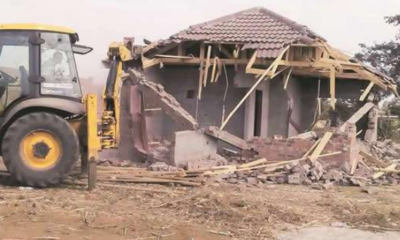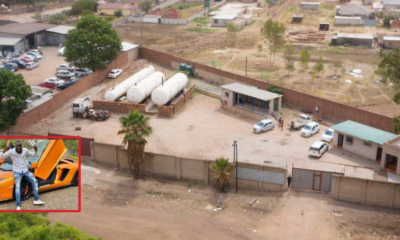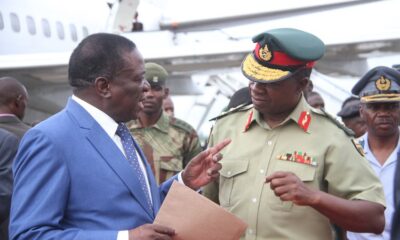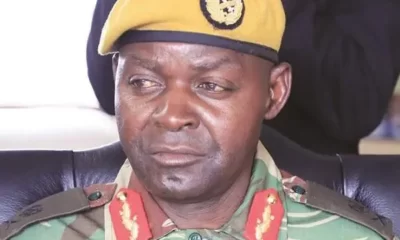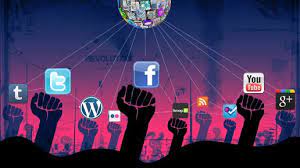
Opinion
Democratic transition and digital media activism: A Zim case study
Published
8 months agoon
By
NewsHawksDR REWARD MUSHAYABASA
THE affordances of information and communication technologies (ICTs) have helped to redefine participatory democracy in most of the African countries that are in democratic transition.
This new development has helped to create communicative spaces for subaltern groups to challenge the dominant power groups. This study critically evaluates the relationship between democratic transition and digital media activism in Africa.
The study noted that there is a symbiotic relationship between democratisation and digital media activism in Africa, and will also argue that many Africans are taking advantage of the affordances of ICT to promote democratisation.
However, while many citizens are now taking advantage of this window of opportunity to reclaim their civil and political rights, some African countries, especially those under authoritarian rule, are seeking new tactics and strategies through which to subvert the communicative spaces created by ICT’s affordances.
Some of these strategies and tactics include internet shutdowns and raising data tariffs and internet tax in, e.g. the Democratic Republic of Congo, Sudan and Zimbabwe. These government measures clearly demonstrate that digital media activism, especially in countries in democratic transition, is not ‘harmless politics’ (Fuchs, 2018) as some scholars suggest.
In these countries, the digital media provide social activists with tools for mobilisation and discursive practices. However, before discussing and analysing the nexus between digital media activism and democratisation in Africa, this chapter has critically evaluated the political situation in most African states during the third wave of democracy in the late 1980s and early 1990s.
Background
From the 1980s to the 1990s there were noticeable “winds of change” on the African political landscape, almost three decades after the introduction of the Third Wave of Democratisation.
In Democratisation in Africa: African Views, African Voices, Kpundeh (1992) captures the movement towards democracy on the continent as a result of both the internet and external forces.
Economic and political challenges caused new African thinking, protests and increased demands for change. There was a marked shift from decolonisation to new struggles of economic recovery and good governance. More importantly:
Although pressures for change had been building in a number of countries, it was widely agreed that the ending of the Cold War served as a catalyst for action. During the Cold War, some countries capitalised on superpower competition, seeking military and development assistance from either the Soviet Union and its allies or from the West in exchange for strategic considerations (Kpundeh, 1992, p6).
The end of the Cold War and other external events combined with internal events within some African countries resulted in heightened pressure for change. Kpundeh (1992) also observes how:
Multiparty democracy has become the rallying cry for much-pursued political reforms, but, in a larger sense, the agitation in Africa in the last three years stemmed from a modest question of accountability. How to hold leaders responsible for their conduct in office and how to make governments more responsive to the wishes of the people.
These calls for greater political changes have had varying effects across Africa in both the Middle East and North African (Mena) and sub-Saharan African regions, bringing multiparty democracy and a climate of new expectations.
In recent years, “the combination of political liberalisation and diffusion of satellite TV and internet technology in Mena have led to a relatively open, transnational, and electronic communicative space which some scholars, like Hafez (2001), call a ‘new Arab public sphere’” (cited in Gheytanchi and Moghadam, 2014, p6). The new generation of activists in Mena use satellite TV channels such as al-Jazeera, al-Arabiyya, CNN International and BBC to counter-hegemonic narratives.
These communicative spaces in Mena have created what Tadros (2005) calls a “parallel community of activists”. The new phenomenon has been “strengthened by the fact that individuals who normally would not be involved in activism are now ‘speaking out’ and expressing themselves on the internet”.
The activism in Mena is mostly a result of growing levels of inequalities, corruption and unemployment that are triggered by the neoliberal economic policies that are pursued by the incumbent governments in the region (Gheytanchi and Moghadam, 2014).
This backdrop helps to contextualise the protests that have engulfed North African countries, such as Algeria, Egypt, Libya, Morocco and Tunisia in recent times.
The nuances between digital media activism in Mena and sub-Saharan African countries are also worth noting. These stark differences might be attributable to a wide range of cultural, political and economic factors (Skjerdal, 2016).
For instance, Mena countries liberalised media systems as part of neoliberalism, while the notion of media reforms in the sub-Saharan African region is still a contentious issue and has received lukewarm support from some governments. According to Mpofu and Matsilele (2020) episodes of digital activism in sub-Saharan African countries such as Zimbabwe “are ephemeral and fleeting, failing to unseat hegemonic actors” when compared with activists in Mena (p. 222). Ndlela and Mano (2020) contend that the media play a pivotal role in the mediation of politics in Africa.
This realisation may explain why most African countries nationalised the mass media after attaining independence. However, there have been some significant changes in mass media ownership in most African countries in the last two decades.
The changes were spawned by the political and economic liberalisation programmes that were introduced by the Bretton Woods institutions in those countries as part of the neoliberal agenda driven by the developed nations and this has had a profound effect on the media ecology in Africa.
There was liberalisation in the mass media, and this paved the way for private ownership of the media. These changes ushered in a new era of media pluralism, diversity and media freedom (Ndlela and Mano, 2020). This study argues that these changes on the political landscape in Africa gave impetus to the democratisation process in the continent. In addition, the recent advances in information and communication technologies (ICTs) have also helped to create more democratic space for counter hegemonic narratives.
These recent developments in digital technologies in Africa have witnessed a significant increase in the number of internet users on the continent. Over the past few years there has been “a 20 per cent year-on-year growth in the number of internet users” in Africa (Ndlela and Mano, 2020, p3).
However, in terms of global rankings in internet penetration, some of the countries with the lowest rates of penetration are found in the continent and these are: Eritrea (1 %), Niger (4 %), Burundi (6 %), Democratic Republic of Congo (DRC) (6 %) and Chad (5 %) (cited in Ndlela and Mano, 2020: 3). The penetration rates in the different African regions are as follows: Southern Africa (51 %); Northern Africa (49 %); Western Africa (39 %); Eastern Africa (27 %) and Middle Africa (12 %) (Ndlela and Mano, 2020).
From these statistics, it can be noted that there is a positive correlation between economic growth and the rate of internet penetration. Manji et al; (2012) argue that countries with a higher Gross Domestic Product (GDP) have higher rates of internet penetration. As a result, Manji et al; (2012, p5) agree with the notion that “technology amplifies social differentiation” and this is clearly illustrated “in the way in which the internet is distributed in Africa”.
Among the countries with the highest rates of internet penetration in Africa are Algeria, Egypt, Morocco, Nigeria and South Africa –“between them represent some 73.5 % of internet usage African-wide” (Manji et al; 2012, p5; Internet World Stats, 2010). In addition, over the past few years outstanding progress has been made in the establishment of tech hubs in some African countries like South Africa, Kenya, Nigeria, Egypt and Morocco. Schelenz and Schopp (2018) also note that a lot of progress has been made in Africa in the provision of digital technologies and these innovative changes include cloud computing communication tools and electronic data storage and retrieval systems.
While some scholars suggest that Africa’s rate of internet penetration remains very low by global standards, others argue that “the digital face of Africa is mobile” and has been transformed in recent years. Almost 82 percent of the continent’s population have access to mobile connection (Majama, 2018). This is supported by official statistics published by Internet World Stats (2018; 2021; 2022). The figures show that there has been a noticeable increase in the number of subscribers for Facebook in Africa in recent years.
For instance, there were 204 million Facebook subscribers from the continent for the period ending December 2017 (Internet World Stats, 2018). As of 31st January 2022, the number of Facebook subscribers in Africa stood at 289, 759, 800 (Ibid, 2021). The statistics also showed a significant high rate of penetration among resource-rich countries like Egypt, Angola, Algeria, Nigeria, South Africa and Morocco and “less penetration in countries like Togo, Swaziland, Malawi, Guinea- Bissau and Lesotho” (Ndlela and Mano, 2020: 3). It was also interesting to note that countries from the African continent, including Egypt, Nigeria, Ghana, Kenya, South Africa and Morocco (2 hours 24 minutes) fared much better than some developed nations in relation to the amount of time spent on social media on average (Ndlela and Mano, 2020).
From this discussion, it is clear that digital technology has made significant gains in Africa in a short time and has transformed the way people communicate. These gains have been noted especially in the use of mobile phones and social media. This point is underscored by De Bruijn, Nyamnjoh, and Brinkman (2009) who refer to “the mobile phones as the new talking drums of everyday Africa” (p13). Among the most popular social media platforms in Africa are Facebook, Twitter, WhatsApp and YouTube.
These ‘new talking drums’ are also often referred to as “disruptive innovations” because they have transformed the way “citizens interact with political messages” and loosened the political elites’ stranglehold over the mass media in Africa (Ndlela and Mano, 2020: 3).
These recent developments mark a departure from the period when State-owned media enjoyed a monopoly in many African countries, and they have enabled social movements to find their voices. Hence, we have recently witnessed the weaponisation of digital media in the struggle for democratisation in Africa, and this has occurred in North African countries, such as Algeria, Egypt, Libya, Morocco, Sudan and Tunisia.
For instance, Twitter messages were used in the revolution that led to the demise of Sudan’s strongman Omar al-Bashir and the resignation of the Algerian President, Abdelaziz Bouteflika, in 2019.
However, the role of digital media in Africa should not be romanticised. The digital media operate as a double-edged sword, which can be used to promote democratisation by social movements, while, in the hands of authoritarian regimes, it can be used by social movements to suppress and keep citizens under surveillance. This inherent potency of digital technologies may help to explain why some African countries view social media with great suspicion and some have recently shut down internet access in order to quell political activism. It is also interesting to note that shutdowns have happened not only in countries with higher rates of internet penetration, like South Africa, but also in countries with the lowest rates of penetration like Chad.
Other African countries which have experienced internet shutdowns so as to deny digital media space to political activists are Gambia, Uganda, Burundi, Mali, Democratic Republic of Congo (DRC), Zimbabwe and Ethiopia.
However, as noted earlier, great caution must be exercised in avoiding exaggerations of techno-optimistic determinism when discussing the role of the digital media in the democratisation process in Africa. Fuchs (2015) argues that there is a need to critically evaluate the political economy of digital media.
He acknowledges the potency of digital media as agents for change, but he cautions that these technologies are a double- edged sword that can also be used by the ruling political elites for surveillance purposes. In addition, the use of digital media is not evenly spread.
There is a digital divide in most African countries, and it is characterised by what Van Dijk and Hacker (2003) termed a yawning gap between the ‘information-haves’ and the ‘information- have-nots’ on the continent (p315). Techno-pessimists (Gladwell, 2010) caution against over-reliance on new technologies for participatory democracy, arguing that the digital media reproduce the structures of domination and inequalities in society.
Africa is still characterised by fragile democracies, weak economies, poverty and unequal distribution of Information and Communication Technologies (ICTs) resources. It is hence important not to strip the African countries of their particularities. Some media penetration in some countries is very low, and in some, it is mainly an urban phenomenon.
We have to understand Africa as a plural entity by avoiding any forms of digital universalism (Ndlela and Mano, 2020, p14).
In a nutshell, digital technologies in Africa are mostly the preserve of urban-based citizens, while the majority of the population in rural areas is still marginalised. Hence, this study argues that digital media has its limitations; on its own it cannot help to achieve democracy.
It can only be effective when weaponised as a tool to create a nexus between online and offline political engagement in a context-specific situation. In this regard, Gambia can be cited as a good exemplar, in which political activists both outside and inside the African country, have effectively used new media to unseat the former President, Yahya Jammeh, who had ruled the country for over two decades.
The activists used “online forums to exchange ideas, mobilise funds, and people in such unprecedented ways that made it impossible for the suppressive regime of Yahya Jammeh to control” (Ndlela and Mano, 2020, p4).
Against this backdrop, this study undertakes to critically examine the nexus between using digital media political activism and democratisation in Africa.
In recent years the phenomenon has generated a lot of interest among research scholars (Makinen and Kuira, 2008; Mare, 2018; Mhiripiri and Mutsvairo, 2013; Nyabola, 2018).
More recent struggles for democratisation have led to the departure of entrenched dictatorships in the Maghreb and Sub-Saharan regions in Africa, and these include Angola, Democratic Republic of Congo (DRC), Egypt, Kenya, Tunisia, Zimbabwe, Algeria and Sudan. The same changes also happened in South Africa where the former President, Jacob Zuma, resigned after being recalled by the ruling African National Congress (ANC) party for committing acts of misdemeanour whilst in office.
He was replaced by his deputy Cyril Ramaphosa. Against this backdrop, we have also seen some citizens increasingly turning to digital media activism to create free spaces for political and social commentaries on developments in their countries. This point is supported by (Castells, 2012; Diamond, 2010; Shirky, 2008) who view digital media as a ‘magic wand’ that can be used by political activists to push their agenda. Diamond reinforces the argument by adding that new technologies “enable citizens to report news, expose wrongdoing, express opinions, mobilize protest and monitor elections” (Diamond, 2010, p70).
In addition, Manji et al; (2012) argue that the advent of new technologies “creates potential for new, effective spheres of protest, mobilisation and resistance” (p8), adding that:
The diffusion and evolution of new media technology in Africa have enabled activists and civil society groups to organise, campaign and engage in political struggles in new ways: whether through SMS campaigns, mobile phone-based crowdsourcing, blogging, video clips or internet radio, these tools offer opportunities for keeping local groups informed, compiling location data during times of crisis and facilitating linkages of significant geographic scope between civil society actors.
Chiumbu (2015) also acknowledges the contribution of digital media to political activism. She argues that digital media are not only used as part of the activists’ repertoire of contention (Ibid.). They are used for fulfilling mostly other key tasks, like administration and networking (Ibid.).
This study focuses on the case of Zimbabwe in order to critically evaluate the use of digital media activism in Africa, with particular reference to the last years of the late former president Robert Mugabe era, from 2016 to the current President Emmerson Mnangagwa administration, which is also known as the Second Republic or New Dispensation period.
Zimbabwe is among the few African countries with a well-developed infrastructure for internet connectivity (Bosch et al; 2020).
This is an extract from Dr Reward Mushayabasa’s PhD thesis awarded by the University of Westminster in Britain. Mushayabasa is a veteran media lecturer.
You may like
-
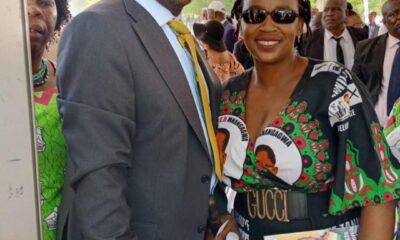

Crowning of Tshabangu is the final nail on democracy coffin
-
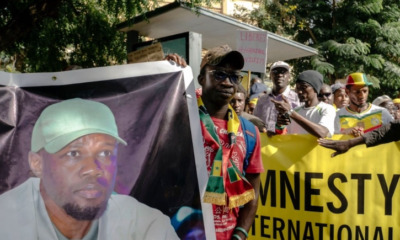

Looking ahead: Democratic deficits make for a bumpy road to Senegal’s elections
-


Democratisation and digital activism
-
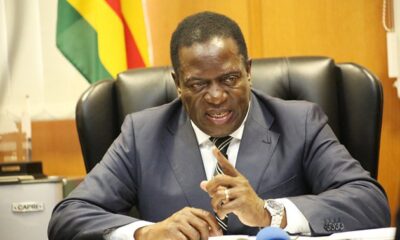

Why the Tshabangu saga marks death of democracy
-
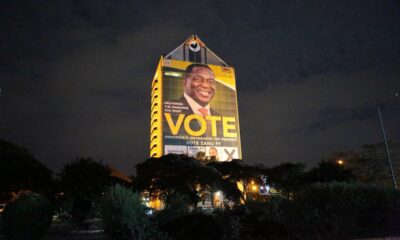

One-party state leads Zim to ruin
-
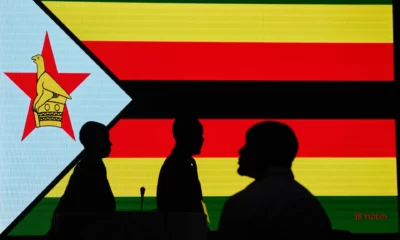

‘Choiceless elections’: Zimbabweans cry foul before bizarre by-elections

